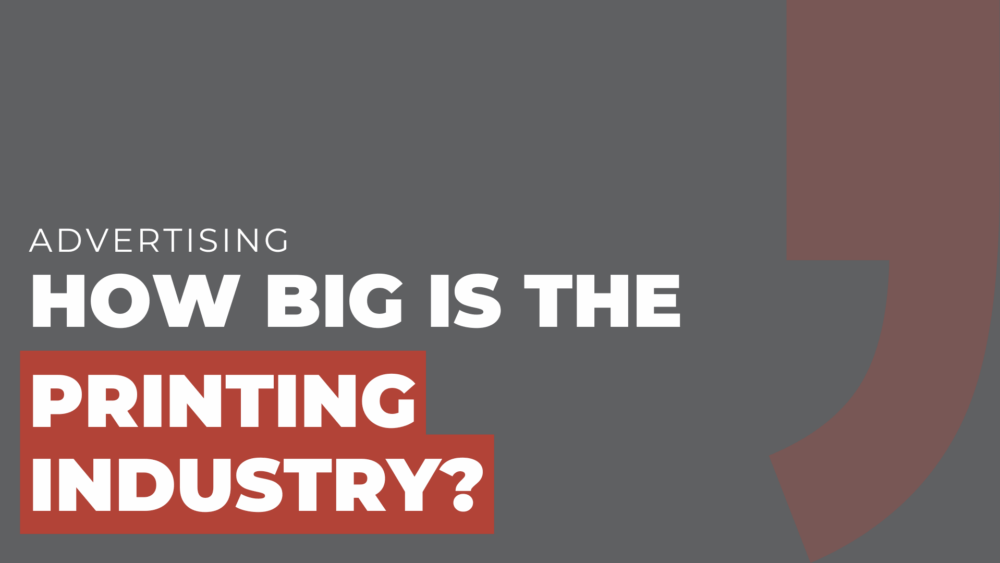Wondering, “How big is the printing industry?”
Despite the rise of digital media, the printing industry remains a significant contributor in the realm of print media advertising and the global economy.
In 2020 alone, the industry generated over $800 billion in revenue, with an estimated 800 billion printed pages worldwide.
This figure is expected to continue growing, reaching over $900 billion by 2024.
Let’s look more at how the printing industry is doing.
Is the Printing Industry Growing or Declining?
Despite the prevalence of digital media, the printing industry continues to hold its ground.
According to recent market research, the global printing industry was valued at $785 billion in 2020.
While it is true that the industry has faced challenges in recent years, such as declining demand for traditional printed materials like newspapers and magazines, it has adapted and evolved to meet the changing needs of consumers.
The printing industry has embraced new technologies and diversified its offerings.
Today, it encompasses a wide range of services, including:
- commercial printing
- packaging
- labeling
- and 3D printing.
These advancements have helped the industry remain relevant and find new avenues for growth.
How Profitable is the Printing Industry?
Profitability in the printing industry can vary depending on several factors, such as market conditions, competition, and the specific segment within the industry.
However, many companies in the printing industry have successfully navigated these challenges and maintained profitability.
One key factor contributing to profitability is the ability to provide value-added services.
Printers that offer personalized printing, variable data printing, and innovative packaging solutions tend to command higher margins.
Additionally, embracing automation and digitalization can streamline operations, reduce costs, and improve overall profitability.
Print Industry Trends: Embracing Innovation
To stay competitive, the printing industry has embraced innovation and adapted to changing market dynamics.
Here are some notable print industry trends shaping the future:
1. Sustainable Printing:
With growing environmental consciousness, sustainable printing practices have gained traction.
Printers are adopting eco-friendly materials, using energy-efficient technologies, and implementing recycling programs.
2. Digital Transformation:
The printing industry has witnessed a digital transformation, leveraging technologies like cloud computing, artificial intelligence, and automation.
These advancements have improved efficiency, reduced turnaround times, and enhanced customer experiences.
All of these aspects improve the effect of branding in any company’s life, including printing services.
3. Customization and Personalization:
Consumers today seek personalized experiences, and the printing industry has responded.
Variable data printing allows for individualized content and targeted marketing campaigns, catering to specific customer preferences.
4. Packaging Innovation:
As e-commerce continues to thrive, there is a growing demand for innovative packaging solutions.
The printing industry is focusing on creating visually appealing, functional, and eco-friendly packaging options to meet consumer expectations.
At the End of the Day
While the printing industry has faced challenges in recent years, it remains a significant player in the business landscape.
By embracing innovation, diversifying services, and staying abreast of print industry trends, printers can continue to thrive in the digital age.
As the world evolves, so too does the printing industry, ensuring its continued relevance and profitability.


Comments are closed.